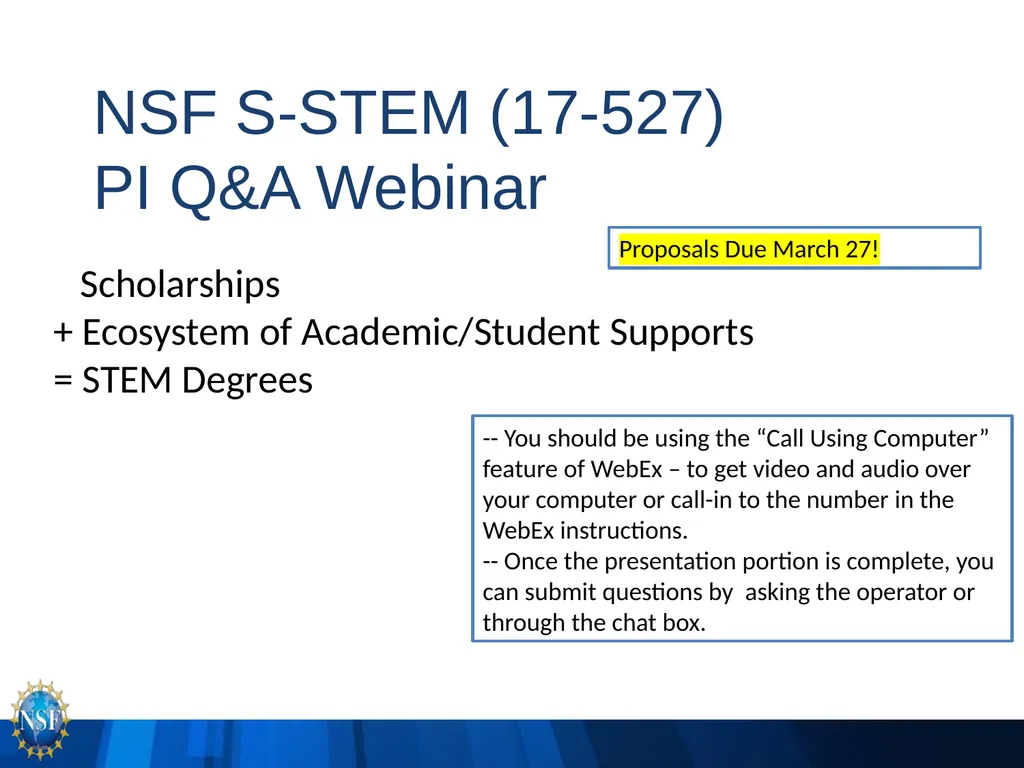
NSF S-STEM (17-527) PI Q&A Webinar -- You should
Author: alida-meadow | Published: 2025-06-27
Description: NSF S-STEM (17-527) PI QA Webinar -- You should be using the Call Using Computer feature of WebEx to get video and audio over your computer or call-in to the number in the WebEx instructions. -- Once the presentation portion is
Download Presentation
Download the PPT/PDF: Download
Transcript:
Loading transcript…